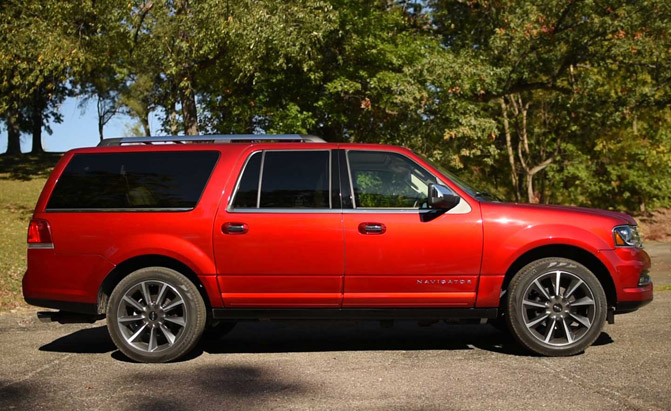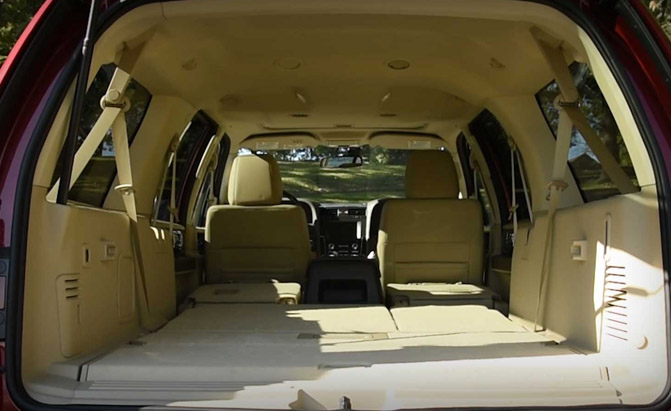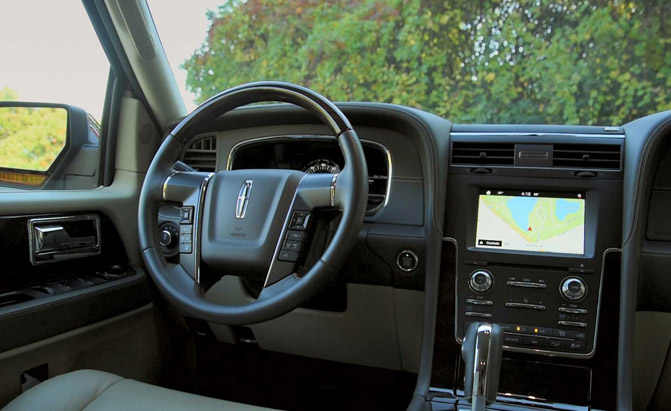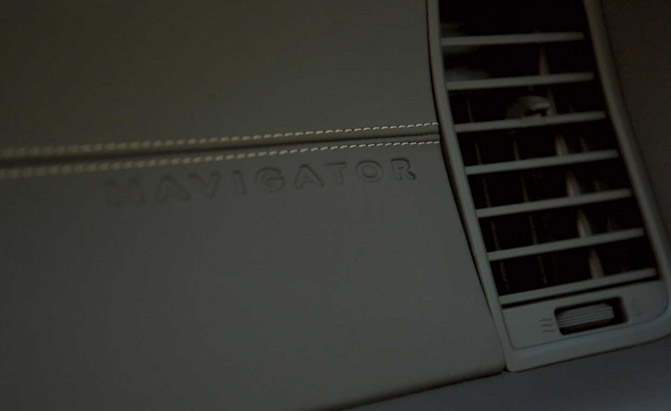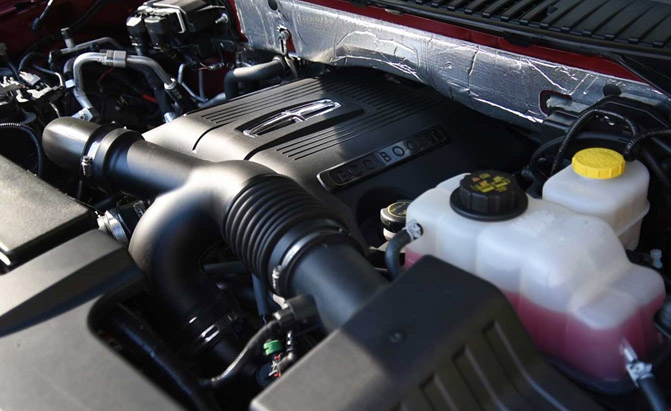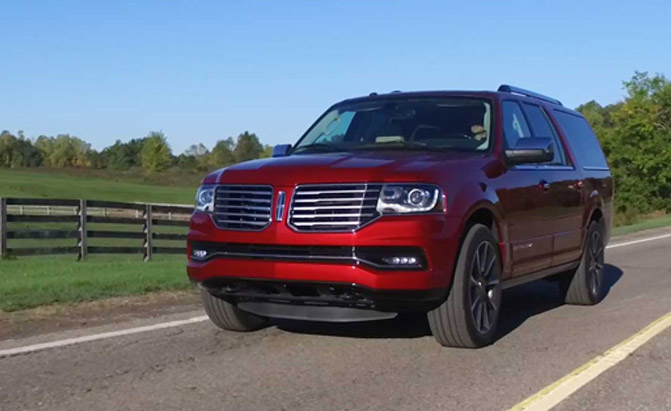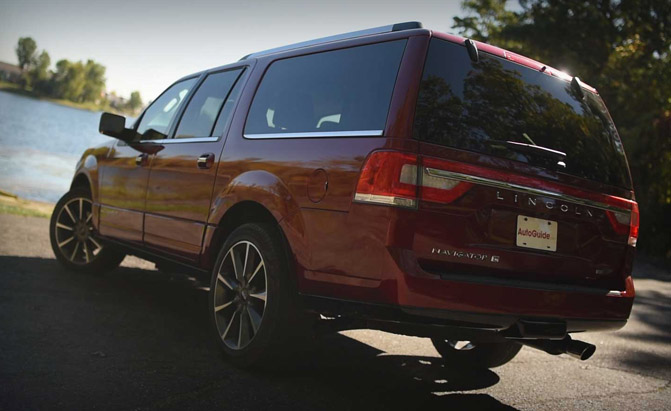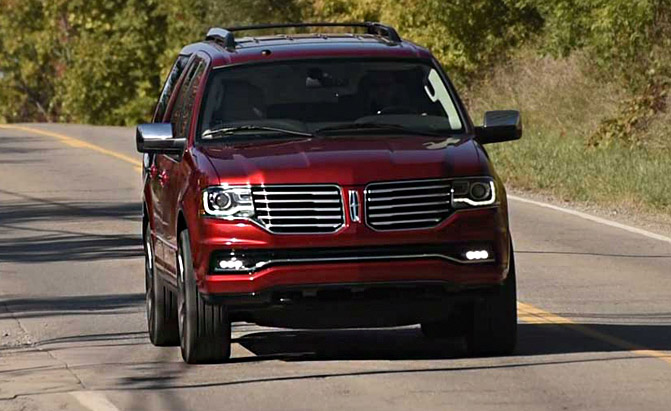To use a tired analogy, traditional body-on-frame SUVs are, in many ways, like dinosaurs.
They’re heavy, lumbering behemoths that are oversized in both dimension and appetite. Just like their reptilian counterparts, they’re also going extinct, though not in a flash by some interstellar sucker-punch, rather their undoing is a more gradual affair caused by an unending push for greater fuel efficiency and reduced emissions.
Compared to more modern car-based crossovers, the Lincoln Navigator L seems like an anachronistic holdover from a bygone era. But that’s not necessarily a bad thing. Dinosaurs excelled at certain tasks and so does this truck-based utility.
Three Mirages
For instance, when it comes to towing and hauling, the ‘Gator can practically yank a McMansion off its foundation. When properly equipped, the vehicle is rated to drag up to 9,000 pounds (4,082 kg) behind it. An extended-length model with four-wheel drive is good for a still-commendable 8,300 lb (3,764 kg).
Compared to a regular-size Navigator, L versions are nearly 15 inches (381 millimeter) longer, measuring a Queen Mary-like 18.5 feet (5,639 mm). Likewise, they roll on wheelbases that have been stretched by 12 inches (305 mm).
Hauling an abundance of cargo is another highlight of traditional SUVs. Fold the second- and third-row seats flat and our test Navigator could swallow more than 128 cubic feet (3,265 liters) of goods. This figure is no doubt bolstered by an independent rear suspension, which allows for a lower load floor, more commodious seating and, of course, better driving dynamics.
Aside from utility-minded tasks, coddling occupants in the lap of luxury is yet another area where land barges such as this Lincoln excel. It can accommodate up to eight people, and against the odds, its aft-most seats are completely hospitable. Adult passengers will be nearly as comfortable in coach-class as the driver is sitting up front. This lux-truck’s third-row chairs are some of the most spacious in the business.
Given its size, accommodations and striking capability it’s no wonder a four-by-four Navigator L strains the scales at just shy of 6,300 pounds (2,858 kg), which is as much as a trio of Mitsubishi Mirages.
A Thin Veneer
Features like power-retractable running boards, brightly finished 22-inch wheels and ventilated bucket seats are a few of the luxury amenities this vehicle brings to the table; they’re also part of the reason it’s so damn heavy.
The top-end reserve trim Navigator I evaluated felt suitably luxurious at first blush. Inside, leather was plentiful and soft; ziricote wood trim added a dash of chocolatey richness; even the front seats were like thrones, incredibly comfortable for hours on end.
Still, if you dug a little deeper, looked a little closer, the ‘Gator’s blue-collar heritage soon became obvious. Despite being outfitted with Sync 3, Dearborn’s speedy new infotainment system, there’s still an overabundance of antiquated Ford switchgear. The buttons on the steering wheel are leftovers, ditto for the headlight knob and turn-signal stalk, which look totally out of place in a luxury model.
We may not like seeing outdated controls but we can ultimately turn a blind eye to them. What’s unforgivable in a vehicle of this class is shoddy build quality. The example I evaluated was the most slapdash vehicle I’ve seen in a long time.
Exterior panel gaps were gaping and inconsistent, the driver’s side mirror rattled when the door was closed, the headlight switch was crooked and the passenger-side airbag cover misaligned. Inside or out, this vehicle did not give me the impression of fastidious craftsmanship, which is a real shame.
Nautical-Inspired Steering
Despite its three-ton-plus curb weight the Navigator accelerates with ease, breezing along on a big, fat heap of torque.
The sole powertrain in this land-barge is a 3.5-liter EcoBoost V6 married to a six-speed automatic transmission. The former delivers 380 horses and a whopping 460 lb-ft of torque, which peaks at just 2,750 RPM. The latter is mostly well behaved; occasionally shifts are less than ideal in smoothness or timing but it’s usually agreeable.
This engine grants the Navi SERIOUS accelerative prowess, moving it with authority at all speeds. Toe into the throttle and it scoots, yet even at full-bore (or boost?) the interior remains whisper quiet, with scarcely any road or wind noise breaching its NVH defenses.
On the efficiency front, our test Navigator was rated at 15 miles per gallon city (15.7 L/100 km) and 19 on the highway (12.4 L/100 km). Combined, it’s expected to return a measly 16 MPG (14.7 L/100 km), which actually proved to be quite an accurate figure. I averaged about 17 (13.8 L/100 km) after my week with it.
Giving drivers something to play with is Lincoln’s continuously controlled damping system. This adjustable suspension arrangement is available in select models or with certain options. It allows you to fine tune the ride quality with three different settings: comfort, normal and sport. Comfort is my preference even if it makes this vehicle feel a bit on the floaty side. Frankly, it’s the most appropriate; sport makes everything stiff and rubbery.
As expected, the Navi’s steering is decidedly nautical; its tiller is light to the touch and devoid of any feel. Fortunately, the ratio is quick enough to keep it from wandering like a derelict freighter.
Another thing that betrays the Navigator’s age is a complete lack of driver-assistance technology. Adaptive cruise control, automatic emergency braking or lane-keep assist are not available at any price, things you can get in something as basic as a Honda Civic.
The Verdict
This Lincoln’s cushy seats, impressive performance, quiet interior and generous cargo capacity are all admirable attributes. However, questionable build quality, ancient switchgear and a lack of technology are unacceptable deficiencies in a vehicle this expensive.
And how much does it cost? Well, I suggest you assume the crash position because our test Navigator stickered for $79,410, including $1,195 in destination fees. That’s nearly Range Rover money for what’s essentially an outdated Ford (or, more accurately, that’s insane). If it’s any consolation, an entry-level, two-wheel-drive, regular-length model can be had for a more reasonable 65 grand (CAD$78,000 in Canada with standard AWD).
At the end of the day, if you want a full-size luxury SUV and don’t feel like cruising in a Cadillac Escalade or something from Land Rover, I suggest waiting until next year when a brand-new Navigator is scheduled to launch. With an aluminum body, it promises to be lighter, more efficient and altogether nicer than today’s model. Luckily for people that have large families, tow heavy loads or just want to be pampered, this breed of vehicle isn’t going extinct, it’s evolving into something better.
Discuss this story on our Luxury Lifestyle Forum







